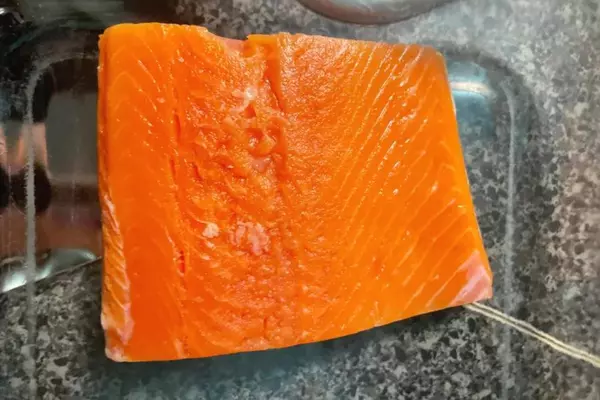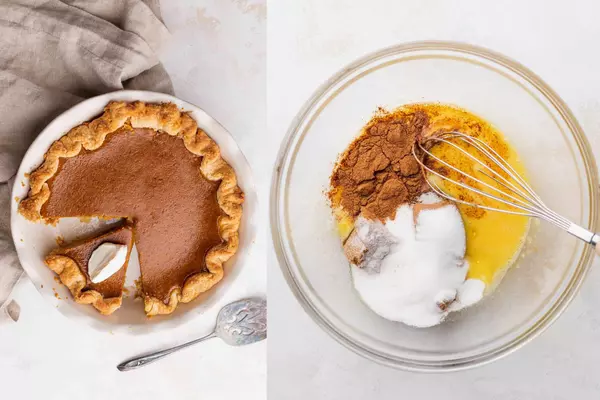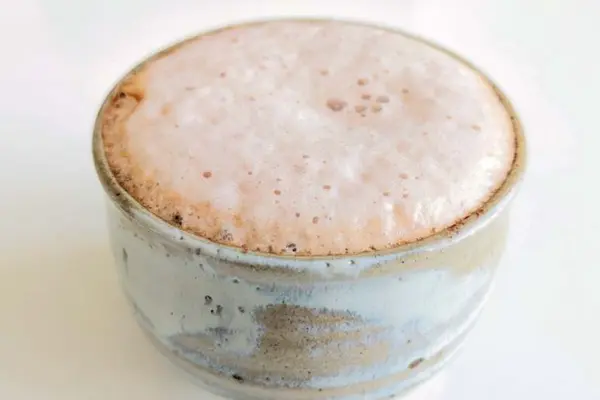Salmon is a delicious and nutritious type of fish that is often enjoyed cooked or raw in a variety of dishes. However, like all perishable foods, they can go bad if not handled or stored properly.
Knowing how to tell if salmon has gone bad is important for maintaining food safety and ensuring that you are only eating fresh, high-quality salmon.
This blog post will go over some key signs that your salmon has spoiled and provide tips for identifying and avoiding bad salmon.
How To Tell If Salmon Has Gone Bad: 7 Signs
1. Change In Color
Fresh raw salmon is usually pink or reddish in color, depending on the type of salmon. If the color has changed to a pale or dull shade, this could be a sign that the salmon is no longer fresh.
2. Odd Smell
Fresh raw salmon should have a mild, slightly fishy smell. If it has a strong, pungent, or rotten smell, this is a clear indication that the salmon has gone bad.
3. Slimy Texture
Fresh raw salmon should have a smooth, slightly moist texture. This could be a sign of spoilage if it feels slimy or slippery to the touch.
4. Discoloration Or Browning
If the raw salmon has brown or black spots or the flesh has turned yellow or grey, this is a sign that it is no longer fresh.
5. Hard Or Dry Texture
Fresh raw salmon should be firm but still, have some give when pressed. If it feels hard or dry, this could be a sign that it is no longer fresh.
6. Presence Of Mold
If you see mold growing on the surface of the raw salmon, it is no longer safe to eat.
7. Expired Sell-By Date
Always check the sell-by date on the packaging before purchasing or consuming raw salmon. If it has passed the sell-by date, it is no longer fresh and should be discarded.
Remember, it is always better to err on the side of caution when it comes to food safety. If you are unsure whether or not your raw salmon is still fresh, it is best to throw it out to avoid the risk of food poisoning.

How Long Is Raw Salmon Good For?
Raw salmon should be stored in the refrigerator at a temperature of 40°F or below. Raw salmon will typically stay fresh for 1-2 days when stored properly.
If you need to store the raw salmon for longer, it can be placed in the freezer at a temperature of 0°F or below. Frozen raw salmon will keep for 2-3 months. When you are ready to use it, be sure to thaw the salmon in the refrigerator rather than at room temperature to prevent bacterial growth.
Can Salmon Go Bad In The Fridge?
Yes, salmon can go bad in the fridge if it is not stored properly or if it has been left out at room temperature for too long. Salmon is a perishable food that can spoil if it is not handled and stored correctly.
To prevent salmon from going bad in the fridge, be sure to follow these storage tips:
1. Keep The Salmon Cold: The temperature of your refrigerator should be set at 40°F or below to ensure that the salmon stays fresh.
2. Store The Salmon Properly: Place the salmon in an airtight container or wrap it tightly in plastic wrap or aluminum foil. This will help to prevent contamination and extend the shelf life of the salmon.
3. Use The Salmon Within A Few Days: Raw salmon will typically stay fresh in the fridge for 1-2 days. If you are unable to use it within this time frame, consider freezing it to extend its shelf life.
If the salmon has been left out at room temperature for more than two hours, it is no longer safe to eat. Bacteria can grow rapidly on perishable foods that are left at room temperature, so it is important to refrigerate or freeze the salmon as soon as possible to prevent spoilage.
Can You Eat Salmon After 7 Days In Fridge?
Eating raw salmon after 7 days in the fridge is generally not recommended, as it is a perishable food that can spoil quickly. Raw salmon will typically stay fresh in the fridge for 1-2 days.
If it has been stored in the fridge for longer than this, it may have started to spoil and may no longer be safe to eat.
If you are unsure whether or not the salmon is still fresh, it is best to use your senses to identify any signs of spoilage, such as a change in color, a strong or rotten smell, or a slimy texture.
If you notice any of these signs, it is best to discard the salmon to avoid the risk of food poisoning.
How To Tell If Salmon Is Bad Smell?
One of the key ways to tell if salmon has gone bad is by checking its smell. Fresh raw salmon should have a mild, slightly fishy smell.
If it has a strong, pungent, or rotten smell, it clearly indicates that the salmon has spoiled and is no longer safe to eat.
Can You Cook Out Of Date Salmon?
It is generally not recommended to cook out-of-date salmon, as it is a perishable food that can spoil quickly.
If the salmon has passed its sell-by date or has been stored in the fridge or freezer for an extended period of time, it may no longer be fresh and may not be safe to eat.
What Happens If You Eat Bad Salmon?
Eating bad salmon can cause food poisoning, which is an illness caused by consuming contaminated or spoiled food. Symptoms of food poisoning can vary depending on the type of contaminant that was consumed and the severity of the contamination.
Symptoms of food poisoning can include:
- Nausea
- Vomiting
- Diarrhea
- Stomach cramps
- Fever
- Headache
- Body aches
- Fatigue
In most cases, food poisoning is not serious and will resolve on its own within a few days. However, in some cases, it can be more severe and may require medical attention.
To prevent food poisoning, it is important to handle and store food properly and to discard any food that has gone bad or that you suspect may be spoiled. If you are unsure whether or not a food is still fresh, it is best to err on the side of caution and throw it out to avoid the risk of food poisoning.
Conclusion
In conclusion, knowing how to tell if salmon has gone bad is important for maintaining food safety and ensuring that you are only eating fresh, high-quality salmon.
There are several signs that salmon has gone bad, including a change in color, a strong or rotten smell, a slimy texture, discoloration or browning, a hard or dry texture, or the presence of mold. If you notice any of these signs, it is best to discard the salmon to avoid the risk of food poisoning.
Remember, it is always better to err on the side of caution when it comes to food safety. If you are unsure whether or not your salmon is still fresh, it is best to throw it out to avoid the risk of food poisoning.
By following proper storage and handling guidelines and using your senses to identify signs of spoilage, you can help to ensure that you are only consuming fresh, high-quality fish.
- Jet’s Ranch Recipe: Make The Famous Dip At Home - April 12, 2025
- James Hemings Macaroni And Cheese Recipe – History On A Plate - April 3, 2025
- French Dip Squares Recipe – Better Than A Sandwich! - March 25, 2025



3 thoughts on “Fresh Or Spoiled? How To Tell If Salmon Has Gone Bad”